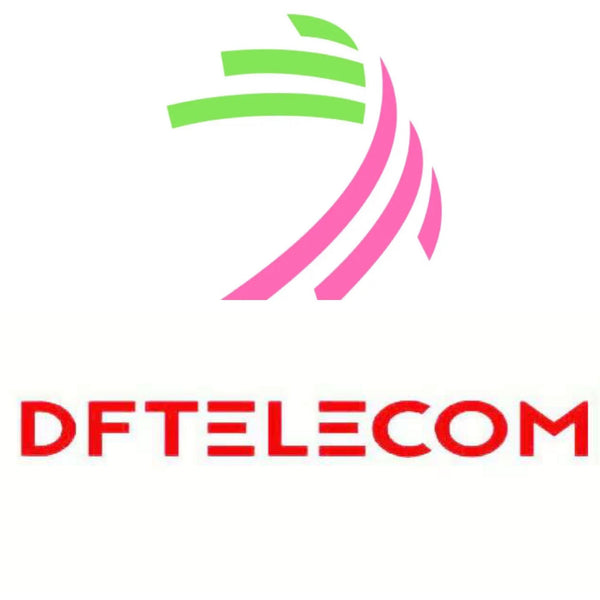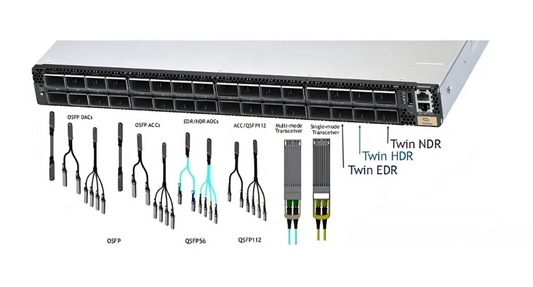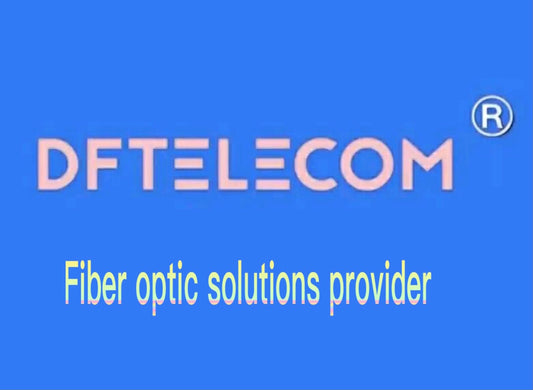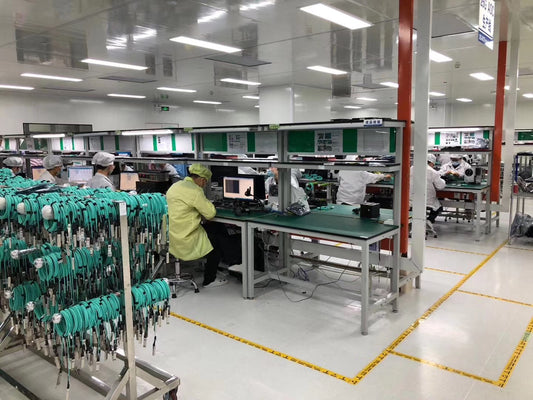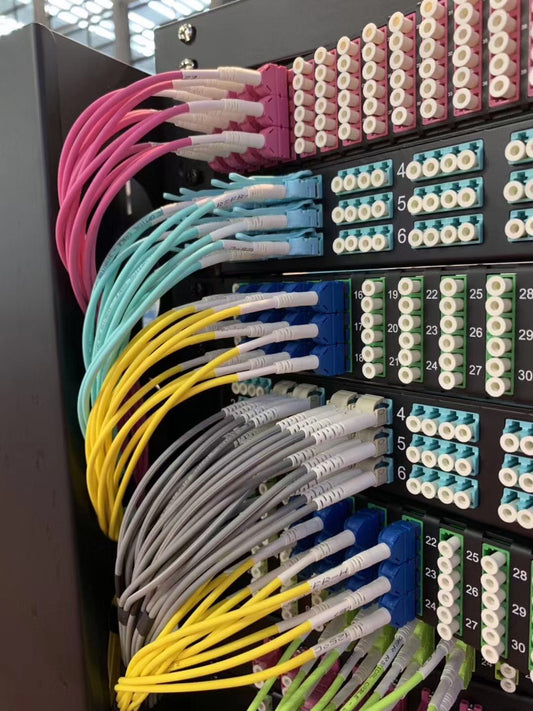With the rapid advancement of cloud computing, big data, and AI technologies, data centers increasingly demand high-speed, low-latency network connectivity. Traditional copper cables, limited by bandwidth and transmission distance, can no longer meet the requirements of modern data centers, especially AI-driven data centers. Optic fiber has become the preferred fiber connectivity solution with its high bandwidth, low latency, and strong anti-interference capabilities. This article explores the key application scenarios of fiber optic cable in data centers and provides best practices for optimizing network performance.
Why Fiber Optic Cable is the Optimal Choice for Data Centers
High Bandwidth and Data Transmission
Fiber optic cable transmits data through light pulses, enabling ultra-high-speed data transfer with rates ranging from 100G to 800G, far surpassing traditional copper cables. This makes it ideal for compute-intensive applications such as AI and big data. Single mode fiber, with its smaller core diameter and support for long-distance transmission (e.g., up to 10 km or more for campus-wide or metropolitan links), ensures seamless synchronization of distributed AI training tasks. Multimode fiber, known for its cost efficiency and high throughput, is widely used for short-range interconnects, such as intra-rack or adjacent-rack connections. It is particularly well-suited for GPU server clusters exchanging terabytes of gradient parameters during model training.
Higher Space Utilization
Fiber optic cables are thinner than copper cables, offering more space-efficient connections. This increased density allows greater rack utilization within data centers, optimizing Power Usage Effectiveness (PUE). As AI computing grows, data centers need flexible infrastructures to handle expanding data and computational demands. Fiber-dense networks provide seamless scalability, reducing operational disruptions from cabling changes. By utilizing compact VSFF connectors like MMC, fiber connectivity can achieve significantly higher connection density. For instance, MMC fiber jumper can triple cabling port density compared to MPO fiber patch cords, allowing for the seamless integration of additional servers and storage without requiring major infrastructure modifications.

Reduced Power Consumption and Cooling Costs
Fiber optic cables consume less power than copper cables, which is crucial for AI data centers. High-power GPU server clusters are already the primary energy consumers in data centers. Fiber's low-loss transmission characteristics can effectively reduce the power consumption of network equipment and lower operational costs. Additionally, proper cable management optimizes airflow distribution, improving HVAC (Heating, Ventilation, and Air Conditioning) efficiency and further reducing cooling costs.
Superior Signal Integrity and Security
AI computing involves massive data processing, making data accuracy and transmission stability critical. Optic fiber is resistant to electromagnetic interference (EMI), ensuring stable data transmission even in high-density server environments, and preventing signal degradation or increased error rates.
From a security perspective, fiber optic cable does not emit electromagnetic signals and is nearly impossible to tap, making it more secure than copper cables. This is particularly important for transmitting high-value data, such as AI training datasets and financial transactions. For enterprises, adopting fiber connectivity can reduce data breach risks and ensure the confidentiality of core business operations.
Best Practices for Deploying Optical Fiber Networks in Data Centers
When deploying fiber connectivity, enterprises must carefully consider types of fiber cables, architectural design, and cable management strategies to build a high-performance, scalable, and long-term stable infrastructure.
Choosing the Right Type of Optical Fiber
Different application scenarios have varying fiber optic cable performance requirements. Selecting the right fiber type enhances network performance and optimizes return on investment.
Single Mode vs. Multimode Fiber: Single mode fiber is ideal for long-distance, high-bandwidth transmission, such as Data Center Interconnects, supporting 400G and higher speeds. Multimode fiber is suitable for short-distance, high-speed interconnects and provides a cost-effective solution for intra-data center links.
MTP®/MPO Fiber: High-density MTP®/MPO fiber reduces cabling space and improves deployment efficiency, making it ideal for large-scale data centers and cloud computing environments.
Armored Fiber Patch Cables: Armored cables offer resistance to pressure, tension, and bending, making them suitable for high-density cabling environments or complex construction scenarios, improving durability and security.
Fiber Pigtails: High-quality fiber pigtails enhance fiber termination quality, reduce insertion loss, and improve network stability, which is especially crucial for core switches, servers, and storage device connections.

Designing an Efficient Optical Fiber Network Architecture
A well-structured network design optimizes data flow, enhances scalability, and improves reliability.
Optimized Topology: Design the backbone and branch networks based on AI and big data workloads to minimize east-west traffic bottlenecks and enhance high-speed interconnect performance between GPU servers.
Redundant Design: Implement backup links and automatic failover mechanisms to ensure rapid business recovery in the event of link failures or equipment damage, maintaining high availability.
Future-Proof Expansion: The fiber connectivity infrastructure should support future 400G/800G upgrades to avoid short-term investment waste and accommodate the growing needs of AI computing clusters. Using pluggable optical modules allows flexible speed upgrades.
Standardized Fiber Management
Effective cable management reduces failure rates, improves operational efficiency, and extends network equipment lifespan.
Structured Cabling: Implement well-organized structured cabling solutions to prevent fiber entanglement, minimize bending loss, and improve maintenance efficiency.
Regular Maintenance and Cleaning: Utilize professional fiber optic cleanning tools to check connection quality regularly. Clean fiber ports to prevent increased insertion loss and ensure long-term stable operation.
Efficient Port Management: Use color coding and labeling for fiber connectivity management to enhance troubleshooting speed. Tools like DFTELECOM WireNet enable visualized cable management, reducing human errors and improving equipment oversight.
Conclusion
With its high bandwidth, low latency, energy efficiency, and strong security, fiber optic cable has become the preferred fiber connectivity solution for data centers, playing a crucial role in AI-driven infrastructures. By selecting the right types of fiber cables, optimizing network architecture, and enhancing cable management, enterprises can significantly improve data center efficiency and stability, ensuring reliable performance for future computing demands.
For high-quality fiber optic solutions, DFTELECOM offers a comprehensive range of products. Explore DFTELECOM’s solutions to build a more efficient and scalable data center network. Visit our website to learn more!
